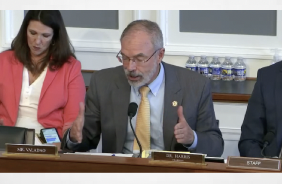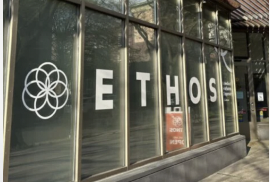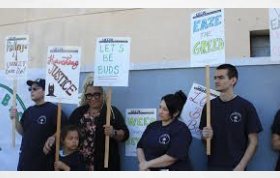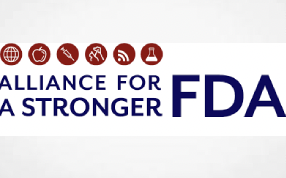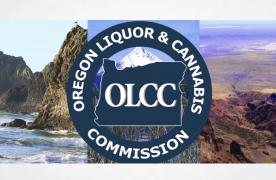An interesting article in itself and a great overview of what is happening in regulated cannabis in the Asia Pacific region.
Also, a far better read than anything you’ll see from some of the standard purveyors of this information.
What really interests us, though, is the fact that the article is published by a Singaporean publication, The Online Citizen.
For a Singaporean publication to look at regulated cannabis in this depth and provide a series of comparisons tells us a lot about where this market is heading in the region in the 2020’s.
Singapore is tailor made for highly compliant organisations to be able to grow securely indoors and manage their business with little or no government intervention ( just pay your taxes!).
If the Singapore government decided, at some point, to allow for cannabis businesses to operate, you would, I suggest, find a very efficient and profitable sector up and running very quickly.
The Article
The global legal cannabis market is projected to reach US$97.35 billion by the end of 2026. More than 50 countries worldwide now permit access to regulated medical marijuana, and several nations–like South Africa and Mexico–have even legalised cultivation for personal use. While much of this development has been concentrated in Europe and the US, several nations in Asia-Pacific have also recently shifted towards greater tolerance. We’ve identified the 5 nations in the region that offer the greatest access to legal marijuana.
1. AUSTRALIA
Australia ranks as APAC’s most marijuana-accessible nation both because of its booming medical cannabis market and its legalisation, in part, of recreational use in some jurisdictions. No other nation in the region has laws quite so liberal–though rifts between commonwealth and district laws may lead to conflict in the future.

Medical Use & Cannabis Research
In the past decade, Australian support for medical marijuana has increased continuously, rising from 69% in 2013 to 85% in 2016, when the growth & cultivation of cannabis for medical and scientific purposes finally became legal. There are now over 1,000 registered patients receiving medical marijuana products by prescription, and this number is projected to surge to 400,000 by 2028. Australia’s cannabis market has grown accordingly, with an estimated value of A$6.3 billion in 2018 alone. In fact, just the top 20 listed cannabis companies in the nation–led by industry leaders Elixinol Global, Cann Group and Althea–have a market capitalisation of A$1.8 billion.
Nonetheless, medical cannabis isn’t accessible to everyone, even those with qualifying medical conditions and an authorised prescription. This is because medical marijuana products are not covered under Australia’s Pharmaceutical Benefits Scheme; all medications must be paid for out-of-pocket. Unfortunately, such costs can quickly become prohibitive. Market research by Cannabis Access Clinics estimates that Australian patients spend an average of A$370/month on medical marijuana products, with epilepsy patients paying an even higher A$1,000/month on average. Given single Australians under 35 years old spend about A$849/week total, such high expenditures on marijuana could amount to 25%+ of an epileptic patient’s monthly budget.

Recreational Use & Drug Culture
Unlike in any other APAC nation, the recreational use of marijuana is actually legal in certain districts in Australia. More specifically, the Australia Capital Territory (ACT) became the first jurisdiction to legalise personal use in a bill passed in September 2019. The bill takes effect at the end of January 2020 and will allow adults to grow up to 2 cannabis plants at home and possess up to 50g on their person. Other districts, like South Australia and the Northern Territory, have decriminalised recreational use, limiting penalties to civil fines.
District laws conflict with federal laws, however, which may ultimately challenge the validity of such “legalisation.” The Australian Commonwealth has neither legalised nor decriminalised recreational marijuana use to date. This means that an individual caught with cannabis may not be penalised by district police in certain territories, but could still be charged and jailed if caught by a federal official. Even still, marijuana is the most widely used illicit drug in Australia and tolerance for its recreational use has grown in the past several years (9.8% in 2013 to 14.5% in 2016). This positive momentum may extend decriminalisation and legalisation to new districts. In fact, a poll last year found that 59% of Tasmanians also supported the decriminalisation of recreational marijuana.
Laws, Penalties & Arrests
Cannabis law and retributional policy vary significantly across Australia, as each district has its own policies, as does the federal Commonwealth. While federal law has ultimate authority, jurisdictional legislation stands unless (or until) questioned. In all cases, individuals can be charged with possession or supply/trafficking (assumed when the possessed amount is above a set threshold), and may receive a prison sentence, civil penalty fine, or both. Districts that have decriminalised–or even legalised–recreational use can still charge people who distribute drugs, consume them in public, or who don’t follow other limitations. While fines may be amongst the highest for the Commonwealth, perpetrators in Queensland can be imprisoned without alternative. Overall–taking other APAC nations into consideration–Australian penalties are generally expensive, but milder in terms of prison sentencing.

Final Verdict:
Ultimately, Australia is the only APAC nation where an individual can legally consume marijuana for both medicinal and recreational purposes. While laws are still in place that limit access and punish misuse, legalisation and decriminalisation have continued to extend further across the nation. Perhaps the most prohibitive factor is the cost of medical cannabis products, which may make it harder for Australia’s less affluent patients to obtain medications they need.
2. NEW ZEALAND
While accessibility of and tolerance for marijuana use in New Zealand was only recently realised on the national scale, momentum towards legalisation has escalated rapidly. In fact, domestic cultivation of medical cannabis will be permitted as of April 2020 and citizens are already set to vote on legalisation for recreational use. If Parliament follows through and approves such a bill, New Zealand will be the first APAC nation to legalise cannabis for both medical and personal consumption.

Medical Use & Cannabis Research
New Zealand’s Misuse of Drugs (Medicinal Cannabis) Amendment Act–which first came into effect just over a year ago, in December 2018–will be fully operational by the end of March 2020. The legislation allows consumers to access CBD medical products with a prescription from a licenced professional. Research suggests that an estimated 25,000 individuals could qualify for treatment in 2018 alone.
Unfortunately, as in Australia, New Zealand’s government (specifically the Pharmaceutical Management Agency–PHARMAC) does not subsidise any medical cannabis products. This means that patients must pay for their medications out-of-pocket. Additionally, the right to cultivate and extract cannabis domestically is still limited to medical and scientific research institutions, which cannot sell products commercially. Instead, patients must purchase imported products that are often pricey and face limited competition.

Nonetheless, this restriction on domestic cultivation and commercial production is about to change. In April 2020, companies that currently have licences to grow cannabis for R&D purposes will be able to apply for permits for commercial cultivation and manufacturing licenses. Many of these companies have already raised millions of dollars in funding and are leveraging these investments to develop “next generation medicinal cannabinoid products” and build industrial production facilities. Paul Manning, director of Helius Therapeutics in Auckland, claims the company could easily produce $700 million worth in products from its current warehouse. With the loosening of restrictions on domestic production, New Zealand’s local medical marijuana industry will have the capacity to grow rapidly and eclipse that of any other APAC nation. In the meantime, popular support for medical marijuana remains strong, with 87% of New Zealanders supporting its use for pain treatment in 2018.
Recreational Use & Drug Culture
Even as New Zealand’s medicinal marijuana industry is yet to fully actualise, the nation has already moved towards legalising the drug for recreational use. Citizens will vote in a referendum on the proposed Cannabis Legislation and Control Bill in 2020. The bill would allow residents aged 20 years and up to grow up to 2 cannabis plants on private property (up to 4 per household), possess up to 14g of dried cannabis in a public space, and to purchase recreational cannabis from approved stores. The legislation would also restrict underage use and possession and limit advertising efforts, in an attempt to minimise harm overall.
Residents will vote “yes” or “no” on the cannabis bill, which will be on the same ballot as the 2020 General Election. The referendum is said to be binding, because the current Parliament has agreed to honour the results of the vote and enact the bill if residents vote to do so. However, many have pointed to a loophole that could complicate outcomes. While the current government has agreed to this binding referendum, a new government–if different than the current–would not be bound to do so. As the referendum will be on the General Election ballot, it’s quite possible that the government might change. If a new party takes power, they may choose not to follow the will of the people.
In either case, recreational cannabis is already quite popular in New Zealand. In fact, research from Auckland University’s Alcohol and Public Health Research Unit revealed that more than half of New Zealanders aged 15-29 have tried marijuana, and about a third describe themselves as active users. Nonetheless, a 2019 Newshub-Reid Research Poll found that 48% of New Zealanders don’t agree with legalising marijuana for recreational use, with 41.7% agreeing and 10.4% not stating a preference. The national split in sentiment may further complicate the outcome of New Zealand’s 2020 referendum. Even still, few other APAC countries have even brought the question of recreational legalisation to a national stage.

Laws, Penalties & Arrests
Even though the non-regulated use of marijuana is still illegal in New Zealand, penalties are far less strict than those found elsewhere and policing is focused on harm minimisation. In fact, an individual possessing less than 5g of cannabis is likely to receive 3 months and/or a NZ$500 fine (approx. US$335) at most. In Australia, a Queensland resident could receive as much as 15 years imprisonment, or be charged a A$68,000 (approx. US$47,600) fine at the federal level. Even more, selling or supplying cannabis could lead to the death penalty in South Korea or Singapore–much harsher than the 8 year sentence for supplying in New Zealand.

Ultimately, New Zealand is poised at the edge of becoming APAC’s most marijuana-accesible nation. If its cannabis referendum bill is enacted into law, it will be the only country to have fully legalised recreational marijuana use. Even still, the nation’s growing tolerance is reflected in its comparatively mild laws. The current climate will further improve with the removal of domestic restrictions on cultivation in April 2020, allowing local New Zealand medical cannabis companies to expand and thrive.
3. THAILAND
Thailand is known as a regional leader in making medical marijuana accessible to its citizens. In fact, its move to legalise medicinal use is largely thought to have opened the door for other APAC nations to follow-suit. Unlike other nations, however, Thailand’s decisions have been predominantly driven by economic factors, with domestic commercialisation of the medical marijuana industry just on the horizon. Nonetheless, the Thai government’s recent war on drugs has stifled any social outcries for recreational legalisation.

Medical cannabis was first legalised in Thailand in December 2018, and its first clinic opened in Ang Thong in November 2019. The government–specifically, its Ministry of Public Health–began distributing cannabis-infused medicines to hospitals and licenced traditional medicine practitioners that same year. Since legalisation, the Thai government has continuously sponsored the development of new formulas for traditional medical applications. More than 15,000 bottles of cannabis oil have already been produced and distributed to date, 16 treatments have been approved for use, and over 2,900 practitioners have been licenced to prescribe medical marijuana to patients. Thailand’s Government Pharmaceutical Organisation [GPO] aims to cultivate and harvest enough cannabis to produce 1 million 5ml bottles of cannabis oil by February 2020.
Despite this strong forward push, Thailand limits domestic cultivation to government and research institutions, and these products can be used for non-commercial use only. This effectively limits supply and reduces patients’ access to medical marijuana products. To address this imbalance, the Ministry of Public Health recently drafted a rule that would allow for commercial production of cannabis-infused medications, which could be used for local consumption (meeting patients’ needs) or even exported abroad. Marijuana grows very easily in Thailand’s tropical climate–some have identified it as a potential “cash crop”–and loosening commercial restrictions could promote domestic growth and boost the economy. Even more, the proposed law would limit foreign ownership of such commercial companies to just 33%. If the law–which is currently under review by the Council of State–passes, it will likely come into effect by March 2020.
It’s also worth mentioning that Thai’s Bhumjaithai Party has recently pushed for even further reform. The party has drafted a bill that would permit households to grow up to 6 cannabis plants at home, and then sell these plants back to the government or local medical practitioners for a profit. According to the party, this schema would dramatically benefit locals’ economic wellbeing while redressing supply issues. However, the bill would need at least 500 legislators’ support to succeed.

Thailand’s fairly recent war on drugs has made recreational use of cannabis for the most part taboo. The war, launched by Prime Minister Thaksin Shinawatra, was launched in February 2003 and was aimed at suppressing both use and trafficking. However, many view the policy as a cover for arbitrary killings. In fact, an estimated 2,800 such killings are thought to have taken place within the first 3 months. An official investigation in 2007 found that the majority of individuals killed during the war had no connection to drugs. Nonetheless, the violence had a strong impact. Today, recreational use is still harshly condemned by the government, and there are no real challenges to such laws.
This does not mean that there is no personal consumption of cannabis in Thailand, however. There are many accounts of bars and taverns in the region, especially near the nation’s border with Cambodia, that advertise “happy” foods and drinks. This labelling indicates the item contains marijuana. Again, just as Thailand’s tropical climate makes it very easy to cultivate cannabis for medical commercial use, it also enables non-licenced individuals to grow plants as well.
Laws, Penalties & Arrests
Penalties for illicit marijuana possession and supply are for the most part stricter than those in Australia and New Zealand. Prison sentences begin at 2 years, but can scale up to 15 years with additional fines. While there is some variability in enforcement reported, likely based on the influence of an estimated 50 organised crime groups in Thailand, policing is still quite strong. In fact, 26.6 tonnes of dried cannabis were seized in 2016, up from 11.7 tonnes in 2006.
Nonetheless, marijuana is far from the “drug of choice” in Thailand, where 75% of identified users and addicts take Yaba (a combination of meth and caffeine) and 7% take Ice (crystal meth), compared to just 5% for cannabis. The estimated population using marijuana illicitly in Thailand has increased since the end of the drug war, but is still quite low as a percentage of the total population (3.7% in 2016).

While Thailand appears economically driven to dramatically open up its medical marijuana industry, personal use is seen as forbidden, and is unlikely to be legalised in the near future. Even so, commercial changes could transform Thailand into a regional powerhouse and disrupt APAC’s entire medical marijuana industry.
4. SOUTH KOREA
South Korea is surprisingly amongst APAC’s most marijuana-accessible countries–though policies and culture certainly limit consumers’ ability to use or even afford products. While medical cannabis was recently legalised, recreational use is still illicit and penalised harshly.

The use of medical marijuana was legalised by South Korea’s National Assembly in 2018–somewhat surprisingly, given the country’s generally conservative nature. While innovative for the region, the legalising amendment still has many restrictions that limit the accessibility of medications. First, permission to use medical cannabis is granted only on a case-by-case basis, requiring government review and approval. Only patients with specific diseases are eligible for treatment (HIV/AIDS, cancer, multiple sclerosis, and epilepsy, including Dravet syndrome and Lennox-Gastaut syndrome), and there must be no other medicine substitute available within the country. Patients must submit an application, accompanied by a doctor’s note, before they are finally prescribed medication through the Korean Orphan & Essential Drug Center [KODC].

As a result of such regulations, the medical marijuana industry within South Korea is not especially strong. Loosening restrictions could allow for greater product research and development and open the doors for new local start-ups, which could ultimately help to reduce medication pricing.
Recreational Use & Drug Culture
Recreational marijuana is taboo in South Korea; in fact, some propaganda efforts have moved to associate cannabis with vestigial Japanese colonial rule and North Korean tactics to “perturb” the country. While there are occasional celebrity arrests for drug use, such acts are quickly condemned as morally indecent. According to Kim Hyeong-gun, head of the Seoul Addiction Institute of Psychotherapy, “Korean society does not approach drug addicts with the goal of healing them… If one uses drugs, society immediately views them as criminals.” While drug arrests overall have increased since 2003, the percentage as per the total population is still remarkably low.
Laws, Penalties & Arrests
Despite its recent legalisation of medical marijuana, South Korea is still very strict in punishing those who consume or sell the drug illegally. Perpetrators can not only be charged up to 5 years of prison and hard labour just for personal possession, they can even be sentenced to death for importing or exporting the drug for profit. Of the APAC nations that allow at least some legal access to cannabis, South Korea is one of the very few with such harsh penalties. This is at least partially driven by the country’s goal of becoming a drug-free nation, and projecting that image to the world.

South Korea, while more open than many other APAC nations, still is quite restrictive in granted access to medical marijuana. Products, which must be imported, can be prohibitively expensive, and retribution for recreational use is notably harsh. At the moment, South Korea’s policies, culture and restrictions prevent marijuana from becoming easily accessible–legally or otherwise.
5. SINGAPORE
Singapore may be known as one of the strictest anti-drug countries in the world, but it’s actually a bit more permissive and exploratory than expected. While the use of raw marijuana is expressly rejected and harshly penalised, the government is actively funding the development of synthetic cannabinoids for use in select medical treatments.

Singapore is generally known to have some of the strictest drug policies not just in Asia-Pacific, but in the world. Even so, the nation recently broke ground by funding scientific research and development of synthetic CBD for prescription medication. The initiative, channeled through the National Research Foundation [NRF], is dedicated to artificially developing cannabinoids through selective genetic transfer, allowing engineers to create therapeutic compounds without every having to grow cannabis plants. This is especially important as cultivation of marijuana in Singapore is still strictly illegal. These synthetic cannabinoids will then be used to develop new treatments for Alzheimer’s, Parkinson’s Disease and more.
In addition to this funding and support for product development, Singapore has also opened the door to legal use of medical marijuana within the country. Recently, the government approved access to medical marijuana for a patient for the first time. The patient, who had drug-resistant epilepsy, was given a 1-year prescription, likely of Epidiolex (the only pharmaceutical grade cannabinoid medication approved by the US FDA). Receiving the prescription required government approval by the Ministry of Home Affairs [MHA], Health Sciences Authority [HSA], Central Narcotics Bureau [CNB], and Ministry of Health [MOH]. This case is important because it not only offers a precedent for future prescriptions, but also reflects the active importation of a pharmaceutical cannabinoid product. Such imports are legal–but only after the company, its manufacturers, and the corresponding products have been rigorously reviewed and approved by the HSA.
Recreational Use & Drug Culture
As mentioned, Singapore has a strict, zero-tolerance policy towards illicit drug use, including for marijuana. Perhaps due to these strict penalties, recreational use–and support for use–are quite low. In fact, a YouGov survey found that only 14% of Singaporeans think that marijuana should be legalised for personal use, while 67% do not support such a measure.
Laws, Penalties & Arrests
In Singapore, merely possessing cannabis can lead to a 10 year prison sentence, and selling or trafficking can be punished by death. These penalties are amongst the strictest in Asia-Pacific, both amongst nations where marijuana is measurably accessible as well as countries where the drug is forbidden altogether. In addition, perpetrators may even face public canings for their crime, which stands out from punishments administered by other nations.

Singapore is certainly not known for its open tolerance for drug use. In fact, as if to clarify its stance after funding synthetic CBD research and development, the government reiterated that raw, unprocessed cannabis is not safe to use and can be both addictive and harmful. Instead, there should be a focus on therapeutic, cannabinoid compounds, which are already included in some medications and can be prescribed within the country. This suggests that Singapore may be open to expanding research and developing new medications, but is unlikely to commercialise production or loosen recreational restrictions anytime soon.
OTHER REGIONAL PLAYERS
Philippines
Many immediately associate the Philippines with its violent and ongoing war on drugs, spearheaded by President Rodrigo Duterte. Nonetheless, the use of medical marijuana is technically legal within the state–though there are so many barriers to access that it’s generally viewed as inoperative. There’s no legal supply within the country, and import measures are incredibly strict. A bill that would broaden access and create a Medical Cannabis Compassionate Center was approved by the House of Representatives in early 2019. However, the proposal was shut down by Duterte once it reached the Senate. In a subsequent press briefing, the President responded, “Not during my time,” indicating that access to medical marijuana is unlikely to broaden until there’s a change in office.
Malaysia
Neither medical nor recreational marijuana use is currently legal in Malaysia, and the nation is known for its strict penalties against drug offenses. However, Malaysia is also approaching greater tolerance on all of these fronts. In February 2019, Deputy Health Minister Dr Lee Boon Chye stated that the government would consider medical cannabis products that were shown to be “safe and effective for use for certain conditions.” The government may also be working with cannabis company THC Global Group Ltd to develop policy framework for eventual medical legalisation.
At the same time, the government is also moving to decriminalise (but not legalise) personal use of the drug. Health Minister Datuk Seri Dr Dzulkefly Ahmad recently stated, “Malaysia is about to embark on a significant game-changer policy of decriminalisation of drug addicts and addiction”, and “an addict shall be treated as a patient (not as a criminal), whose addiction is a disease we would like to cure.” The Malaysian government is even moving to abolish its current death penalty for drug offenses.
Japan
Japan also has not truly legalised medical or recreational marijuana use. While it is legal to import CBD oil, products must have 0% THC (the psychoactive component of cannabis). Prescribing or consuming natural cannabis is strictly forbidden.
STANDARDISED CHARTS FOR COMPARISON
Below, we’ve combined the legal status for medical and recreational cannabis usage by country for easy comparison. Legislation regarding recreational legalisation is currently pending in New Zealand, as a referendum vote is underway. While medical cannabis usage is legal in South Korea and Singapore, applications are narrow and may not be fully utilised by governing parties.

The table below compares maximum fines for cannabis possession and supply or trafficking, standardised to USD for parallel reference. Possession is considered supply or trafficking after a minimum quantity threshold is reached, which varies from country to country. In many cases, possession and trafficking can be penalised with a fine, prison sentence, or both.

The following table compares the maximum prison sentence for cannabis possession and supply or trafficking by country. In South Korea and Singapore, drug trafficking can result in life imprisonment or even the death penalty. Even still, many APAC nations with capital punishment for drug offences are currently reconsidering such severity.

RESEARCH & METHODOLOGY
In conducting this research, we carefully reviewed official government bills and legislation for each country, translated to English where necessary. Additional sources included press briefings, popular media coverage, and industry-tracking sites offering frequent updates on cannabis news.
In some cases, cannabis law and associated penalties for illicit use are quite complex, with contradictory interpretations found across different media outlets. We have done our best to cross-reference accounts, giving greatest credence to federal documentation. Laws are also in flux across many parts of Asia, with bills under discussion and referendum votes pending. As a result, the legal status of cannabis use may change accordingly.
Our analysis covered 14 Asia-Pacific nations and focused on those that had either legalised or decriminalised medical or recreational cannabis use. These top 5 countries were then ranked according to breadth of access and extent of legalisation. Three additional nations were included at the end for their partial development towards increased tolerance.
Please note: Content on Medical Use & Cannabis Research for New Zealand has been updated as of 20 Jan 2020 to reflect legislation that will allow local companies to apply for licenses to cultivate and manufacture medical marijuana starting April 2020.
This study was originally written and published by ValueChampion https://www.valuechampion.sg/top-5-apac-countries-legal-cannabis
SOURCE:
https://www.theonlinecitizen.com/2020/01/30/top-5-apac-countries-for-legal-cannabis/
